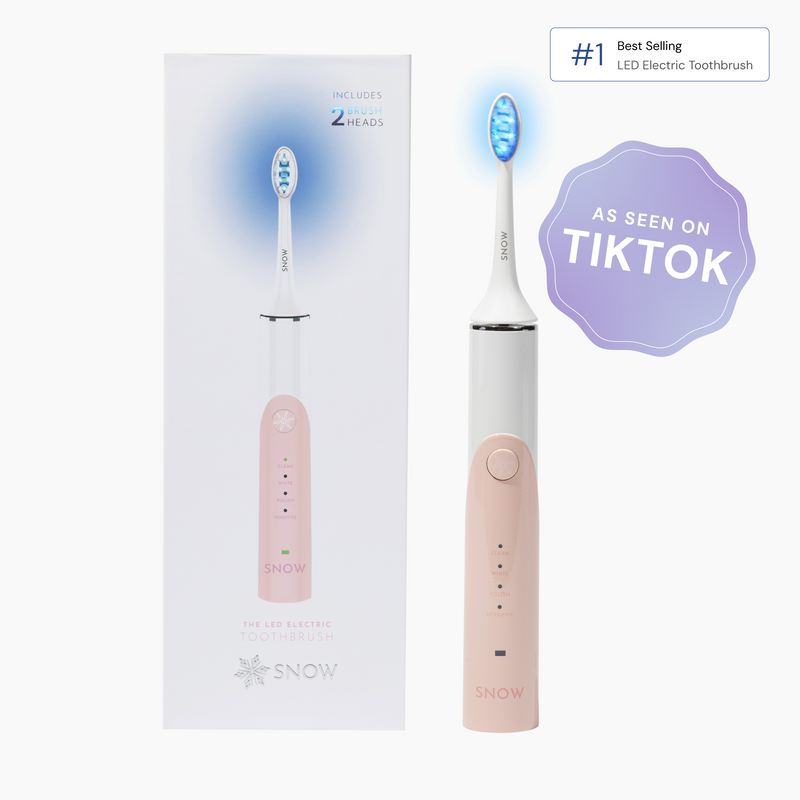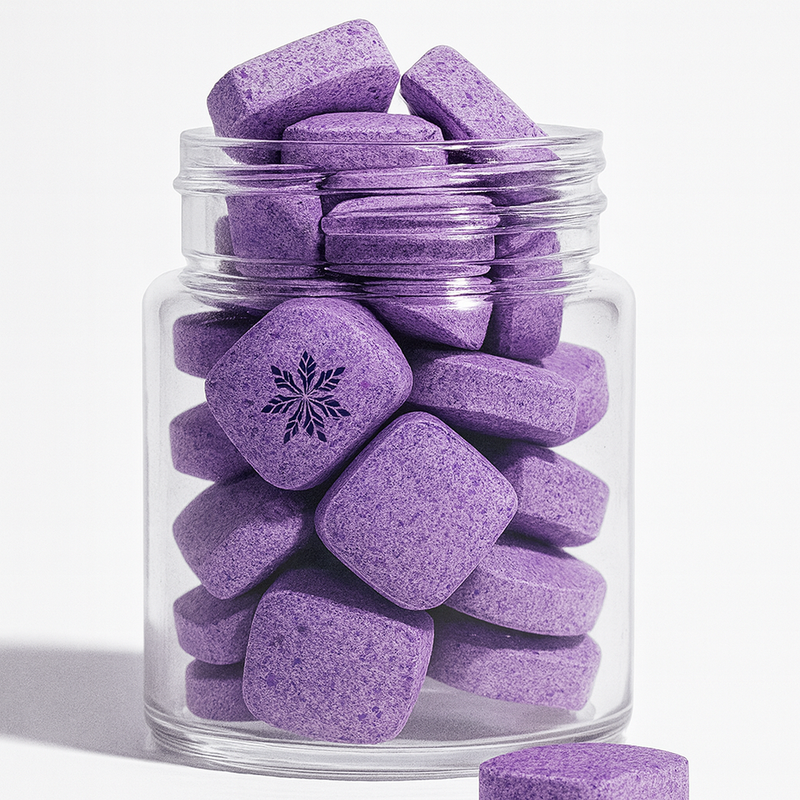There are plenty of things you don’t want to see in your smile when you look in the mirror. Spinach, poppy seeds, unidentified chewed food — none of it is ideal.
And yet those all pale in comparison to discovering a sizable hole in your tooth. That’s not something that a quick rinse or some dental floss can remove, and it’s only a matter of time before it starts causing tooth pain or worse.
So what do you do when you have a hole in your tooth? You’re going to want to act fast in order to save your smile and prevent further tooth decay.
To help you do that, we’ve created this guide to everything you need to know about cavities forming. It’s got everything from oral hygiene tips and information on how a cavity forms to pointers on how to protect teeth and some advice on identifying holes in teeth that aren’t cavities.
WHAT IS TOOTH DECAY?
Tooth decay is what happens when acids produced by bacteria in the mouth wear away at tooth enamel and cause tiny holes, also known as dental caries or cavities, to form. When it’s not treated, the decay can begin to spread, causing tooth pain, bacterial infection, and even tooth loss.
THE DIFFERENT TYPES OF TOOTH DECAY
While all tooth decay is essentially the same in many ways, there are different ways of classifying cavities, mostly by where they’re located. Below is a list of those classifications, along with some useful information about each.
FISSURE CAVITIES
Fissure cavities are found on the chewing surfaces of the back teeth. They’re a fairly common type of tooth decay, thanks to plaque’s propensity for building up in the tiny pockets on the tooth’s bite surfaces. Fissure cavity treatment often involves sealants or fillings but may require a dental crown in more severe cases.
ROOT CAVITIES
While fissure cavities occur in the grooves of the tooth’s bite surface, root cavities occur closer to the gum line on the tooth’s root surfaces. This type of tooth decay is more common in older adults due to receding gums and the tendency of aging permanent teeth to not have as much protective enamel. You can treat root cavities with a filling and possibly a root canal.
SMOOTH SURFACE CAVITIES
Smooth surface cavities affect a less vulnerable area of the teeth: the flat exterior surface. They’re slow to develop and not as common as other forms of tooth decay. Smooth surface cavities most often affect those who do not practice good dental hygiene.
BABY BOTTLE TOOTH DECAY
While the previous three types of tooth decay were defined by where the dental caries appear, baby bottle tooth decay is defined by who is suffering from the tooth decay.
This term is used to describe dental caries in infants and young children. They are most often caused by extended bottle or sippy cup use and typically occur in the front teeth, although they can affect any of the child’s baby teeth.
THE TOOTH DECAY PROCESS
If you’re looking to prevent tooth decay, you’re going to want to know exactly how it occurs. The process is actually a relatively straightforward one, and it’s also fairly easy to prevent if you just practice good dental hygiene. To help you keep away those dental caries, we’ve listed the major steps in the tooth decay process below:
STEP 1: SUGARS AND STARCHES ARE CONSUMED
When you consume starchy or sugary food and drink, you’re providing a meal to the bacteria that live in your mouth. Those bacteria then create an acidic byproduct out of those sugars and starches.
STEP 2: DENTAL PLAQUE FORMS
The leftover food particles from those starchy and sugary foods then combine with the decay-causing bacteria and its acidic byproduct to form what’s known as dental plaque. Plaque is a sticky film that makes its home on and in between your teeth, where it will eventually become tartar.
STEP 3: CAVITIES FORM
If you maintain a good oral hygiene routine, you can keep the plaque in your mouth to a minimum. However, if you fail to brush and floss regularly, that acid in the plaque will cause enamel decay, resulting in tiny holes that can eventually become problematic tooth decay.
SIGNS OF DENTAL CARIES
Dental caries won’t necessarily jump out to you and make their presence known, and frequently when they do happen to do that, it’s because the enamel decay has become fairly severe. Below are some of the most common signs that you have holes in your teeth that could use some attention from your dentist.
- Toothache with no known cause
- Increased tooth sensitivity
- Chipped or broken teeth
- Black, yellow, or brown spots on teeth
- Bad breath (halitosis)
- Food gets stuck in your teeth
- Unusual and unpleasant mouth taste
If you notice any of these symptoms, it’s possible that they’re the result of tooth decay.
While it may not be any cause to rush to your dentist immediately, tooth decay will not get better without treatment, so schedule an appointment as soon as you can.
HOLES IN TEETH THAT AREN’T CAVITIES
While pretty much all holes in your teeth are likely to be considered tooth decay, that’s not always the case. There are actually some holes in teeth that aren’t cavities, such as holes caused by dental trauma and by teeth grinding (bruxism).
Although preventative methods for these types of holes in the teeth are quite different from the ones used to prevent tooth decay, the treatment methods are all pretty much the same. Sometimes they can be fixed with a filling; other times, they require a dental crown, and occasionally they require root canals.
HOW TO PROTECT TOOTH ENAMEL AND PREVENT CAVITIES
If you want to stop tooth decay, then you’re going to have to keep plaque from building up and remaining in your mouth. In order to do that, follow these tips:
AVOID SUGARY FOODS
Those sugary and starchy foods and drinks are essentially the fuel that starts the fire when it comes to how cavities form. You don’t have to avoid them altogether, provided you follow the rest of the steps in this guide, but you should absolutely look to reduce your intake if you want to care for your protective enamel.
BRUSH TWICE A DAY
A good oral hygiene routine is the number one way to stop tooth decay. Get a quality toothbrush and fluoride toothpaste approved by the American Dental Association, and make sure you brush two times a day for at least two minutes at a time. You may also want to brush shortly after any kind of sugary drinks or food.
FLOSS ONCE A DAY
Brushing thoroughly can go pretty far, but there are simply areas of your mouth that are inaccessible by a toothbrush. Floss can get between your teeth to remove cavity-causing plaque and prevent gum disease. Do it once a day, every day.
VISIT YOUR DENTIST REGULARLY
Your at-home routine needs to be paired with seeing your dentist regularly if you really want to defend your mouth against tooth decay.
Regular dental checkups and cleanings once every six months can not only help to prevent dental decay — it can also help you catch any oral health issues early before they have a chance to develop into anything serious.
RINSE OFTEN
If you decide that you can’t resist those sweets (it’s okay, you’re only human), then you should at least take the time to rinse your mouth out afterward in order to wash away the sugars so that they don’t interact with the bacteria in your mouth to become decay-causing plaque.
USE FLUORIDE MOUTHWASH
Fluoride helps to protect your teeth from the acids found in plaque, which means your teeth are less likely to experience decay. If you want to take advantage of this, grab a fluoride mouthwash approved by the American Dental Association and add it to your daily routine.
WHAT TO DO ABOUT A HOLE IN THE TOOTH
When you’re noticing any of the symptoms of tooth decay we’ve listed above, or you’ve simply noticed a hole in your tooth, and you’re feeling concerned, then your best bet is to schedule a checkup with your dentist so they can offer the best root cavity treatment.
If they do determine that you’re looking to treat cavities or a hole in your tooth, then you can anticipate one of the following treatment options:
FLUORIDE TREATMENTS
When you catch the cavity early enough, professional fluoride treatments can actually reverse developing cavities and protect the affected tooth. This intervention needs to occur very early on, however, as there quickly comes a turning point at which the decay is too significant, and a more serious treatment is required.
DENTAL FILLINGS
Fillings are small pieces of material made from metal, composite resin, porcelain, plastic, or a combination of these materials. Your dentist will remove the decaying part of the affected tooth and fill it in with the filling material, protecting your oral health and preventing any further spreading of the tooth enamel decay.
DENTAL CROWN
A dental crown is a prosthetic cap designed to look and feel just like a natural tooth. It’s often made from metals, composite resin, porcelain, ceramic, or a combination.
When decay is too significant for a filling, and significant tooth damage has occurred, your dentist will likely suggest this method. It requires them to remove the decay, prepare the remaining tooth structure, and affix the crown on top.
ROOT CANALS
Root canal therapy may be necessary if the enamel decay eventually reaches down into the inner tooth and infection occurs. The root canal procedure requires your dentist to remove the infected collection of blood vessels and nerves, disinfect the inner tooth, and then refill it with a biocompatible material called gutta-percha.
TOOTH EXTRACTION
That severe toothache may be an indicator that things are too far gone, and you may need to have the tooth extracted. While this may not seem like an ideal treatment option, it’s better than the alternative, and there are actually a few different ways to replace that tooth, restore function to that area of your mouth, and regain your smile.
WHY YOU SHOULD NOT IGNORE TOOTH DECAY
It’s a well-documented fact that there are many people who suffer from dental anxiety. Most people aren’t exactly jumping for joy when it comes to time to sit down in that dentist’s chair, but others are truly terrified by it — enough to avoid going altogether in spite of significant pain and discomfort.
Well, we’re here to tell you that you should absolutely never ignore your tooth decay, even if you’re petrified of a dental visit. Here’s why:
The first thing you need to know is that tooth decay will not heal on its own. It will only continue to spread and cause you more pain and discomfort, and eventually, it can become a much bigger problem.
Whether it’s baby bottle decay occurring in your toddler or root cavities occurring in your later years, those cavities will not stop bothering you until you have them treated.
Those aforementioned bigger problems? They’re probably worse than you think. As your cavity spreads throughout your tooth, the chance of the tooth breaking into pieces becomes exponentially greater. The treatment to fix this issue is more complicated and uncomfortable than the treatment you’ll have avoided.
Worse than that is the fact that both cavities and tooth damage increase the odds of a tooth infection. The treatment for that is almost always limited to two options: root canal or tooth extraction.
An infection left unchecked can develop into a dental or tooth abscess. That dental abscess can spread the infection into your blood and throughout your body, leading to serious issues with your overall health.
While visiting the dentist may be frightening to you, the ramifications of avoiding treatment for your cavities are more frightening than that. Contact your dentist as soon as you notice any signs of tooth decay.
Frequently Asked Questions
Why are there tiny holes in my teeth?
Plaque acids dissolve minerals in the hard, outer enamel of your teeth. This erosion creates microscopic gaps or holes in the enamel, which is the initial stage of cavity formation. When parts of enamel are worn away, germs and acid can get into the dentin layer of your teeth causing damage.
Is a hole in the tooth always a cavity?
Cavities can appear as little holes on the surfaces of your teeth. If you can see a physical hole in or on your tooth, you most likely have a cavity. Even if the hole is not yet a cavity, having an opening in your tooth's enamel allows germs to enter and create dental decay.
Can little holes in teeth be repaired?
Enamel can heal itself by using minerals found in saliva and fluoride from toothpaste or other sources. However, as the deterioration process proceeds, more minerals are lost. The enamel deteriorates and is eroded with time, resulting in the formation of a cavity. A cavity is permanent damage that a dentist must repair with a filling.
When does it become too late to repair a cavity?
In most situations, it will be too late to repair the damage using natural treatments when you discover the signs of tooth decay. You should see your dentist to prevent the damage from spreading throughout the tooth.
BRIGHTEN YOUR SMILE WITH SNOW
If you’re looking to brighten your smile at home, check out SNOW’s line of highly effective home teeth whitening products today.







































































